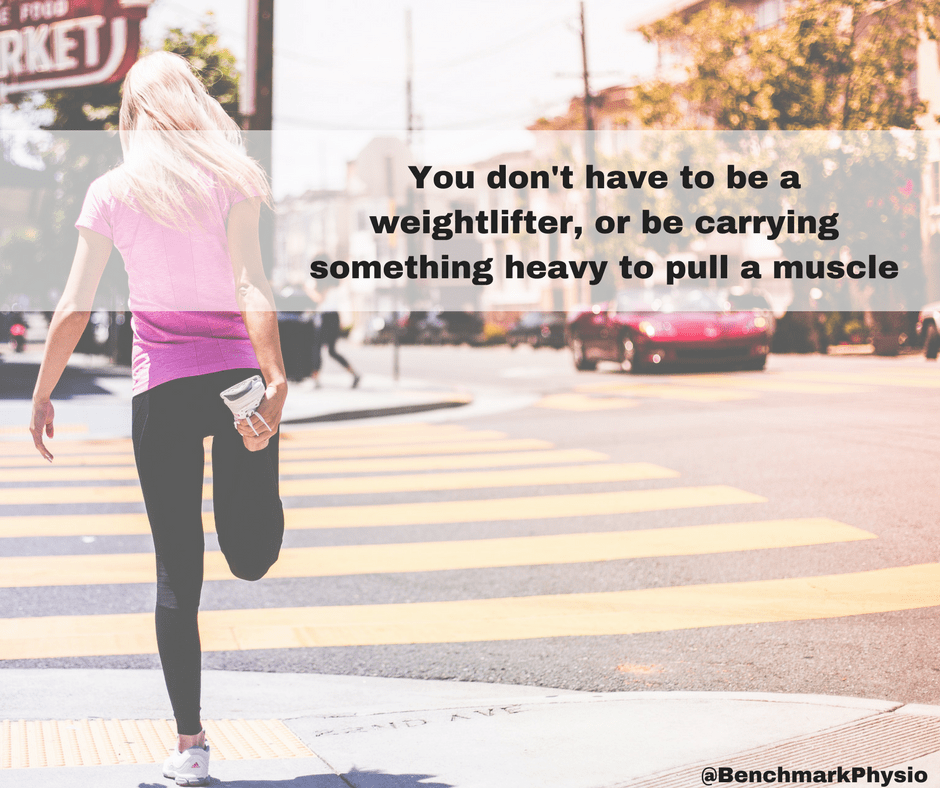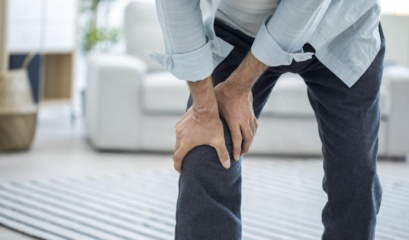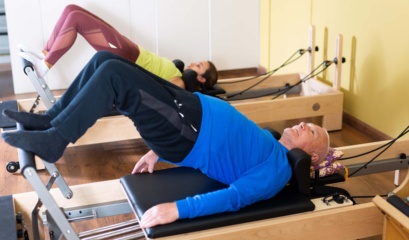Have you ever pulled a muscle?
Chances are that you have.
And when you do, you definitely know it!
When you pull one the pain can range from mild, like a minor neck strain you get from turning your head the wrong way, to very severe, such as a lower back injury that leaves you unable to walk for days.
Just last week, a gentleman was in agony in one of our clinics
He hobbled in, dragging his leg behind him, barely able to walk and asked:
“What do you do when you pull a muscle?
I was playing football with my nephew and as I kicked the ball, something went and I couldn’t move and I can still barely walk!
…What can I do to ease the pain quick?!”
The man was in bits, every step he took made him scrunch his face in agony.
And I know what that’s like…
A few years ago, the week before my birthday, I sneezed and pulled a muscle in my lower back.
I was in so much pain and completely unable to walk, I had to use my office chair with wheels to support me to get me around the house.
That’s right, I pulled a muscle from sneezing – my family were highly amused.
And as embarrassing as it was, putting my back ‘out’ from sneezing makes sense.
The sneeze forced a sudden, uncontrolled movement that my body simply wasn’t prepared for.
And it’s the kind of sudden movement that often results in a pulled or strained muscle, because the body is forced into an action it’s not warmed up for.
Whiplash is a great example…
The sudden rapid back and forth movement of the neck causes strain to the neck muscles, leaving you feeling achy, and your neck too painful to turn properly.
And the same happened to the gentleman who walked into the clinic who strained his leg from playing football.
His muscles weren’t prepared and warmed up properly, so the sudden quick movement of kicking a ball came as a shock to his body, straining a muscle in his leg.
You don’t have to be a weightlifter, or be carrying anything heavy to pull a muscle
Sneezing, turning your neck suddenly, sleeping in an awkward position, moving to pick something up or even reaching for something that’s tricky to get to – are just a few examples of simple things you can do every day to put a muscle out.
And believe me when I say, when you pull a muscle, you’ll know it right away.
You might experience a sudden onset of pain, soreness, bruising, stiffness, swelling, a limited range of movements, muscle spasms…
And that’s just a few symptoms!
So, what do you do when you pull a muscle?
Do you use ice or heat? Do you rest of keep moving? Do you get a therapist to take a look?
If the muscle pull is severe – the kind that really does stop you from walking, or turning your neck at all…
Then you should immediately see someone.
Don’t mess around with severe injuries and try to treat them at home yourself, or it might last longer!
The advice I’m about to give is for mild muscle strain – the kind where you can still move, but you know you’ve done something.
As always, use your best judgement – go and seek help if you’re in any doubt whatsoever.
Ok, so you’ve pulled a muscle, what should you do?
I’m going to break this down so you know what to do at all stages when you’ve pulled a muscle so you can get back to 100% as quickly as possible.
As soon as you know you’ve pulled a muscle – use the tried and tested ‘RICE’ method.
Note that this is a treatment protocol recommended to do in the first 24 hours…
R – “Rest”
The first thing you need to do is stop doing whatever you did that pulled your muscle in the first place.
I can’t tell you how many times we’ve seen people injure themselves, especially when doing a physical activity, and decide to go ahead and push through it.
That’s guaranteed to always make your injury worse.
Next – “Ice”
A lot of people ask – “When do I use ice and when do I use heat?”
Well, the sooner you apply ice, the better!
Ice the injured area for 20 minutes on, 20 minutes off, and do this up to 3 times.
Ice provides pain relief and help minimise swelling, which is the primary purpose of ice – to reduce swelling.
It’s best to think of ice as a pain reliever.
But don’t apply it directly to the skin – wrap it in a tea towel and then apply to the area.
Then you want to move on to “Compression”.
Apply a soft bandage to the area to help support the muscle and reduce the swelling.
Make sure not to wrap the area too tightly or you’ll restrict blood flow to the area.
Next it’s E – “Elevation”.
If possible, try to keep the injured muscle elevated, above the level of your heart.
This will help reduce swelling.
Though I know this isn’t always possible in some cases, so don’t worry about this one too much.
As a general rule, after doing the above method for a day, I like to get moving as soon as possible.
Even as soon as the next day – I’m only talking about very gentle movements that don’t cause pain.
If anything you’re doing causes pain, stop immediately.
So my tip for you today: you don’t always need to rush off to a pharmacy to buy a “magic cure” to rub on muscles and joints or take painkillers.
There is NEARLY ALWAYS a natural solution out there waiting for you.
Second… if you are experiencing a pulled muscle, try this ‘RICE’ method first, although it isn’t a guaranteed fix, it’s proven to help ease all of them and a good place to start.
Visit Benchmark Physio for Pulled Muscles
If you’ve severely pulled a muscle, then RICE may not be enough. Visit one of our Benchmark Physio locations today to get the help you need from one of our physiotherapists. Book an appointment online.









